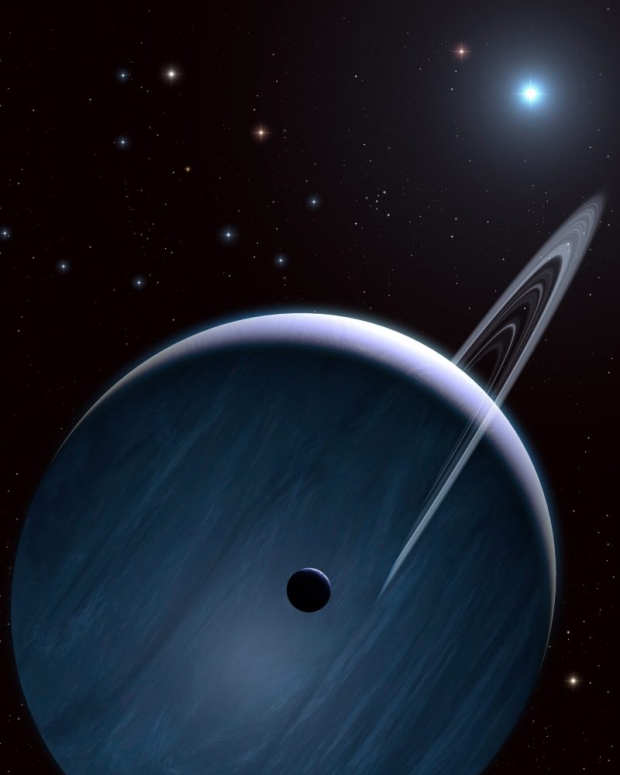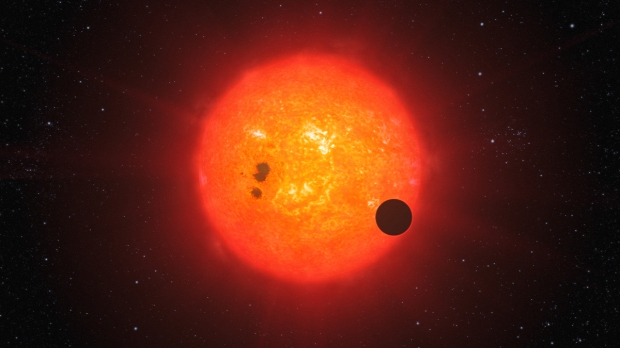A study on the planetary heists titled "Making BEASTies: dynamical formation of planetary systems around massive stars" has been published in the journal Monthly Notices of the Royal Astronomical Society: Letters.

Artist's impression of a BEASTie. Credit: Mark Garlick
Researchers from the University of Sheffield have provided a novel explanation for how planets discovered as part of the B-star Exoplanet Abundance STudy (BEAST) came to be. These Jupiter-sized planets are found hundreds of times the distance between the Earth and our Sun away from their massive host stars. Such large stars typically stunt the growth of planets before they reach Jupiter-like, or Jovian, size, owing to large amounts of ultraviolet radiation.
Previous work by the researchers has shown stars in densely populated stellar nurseries, where stars are born, can steal planets from other stars or capture free-floating planets without a host star. In these nurseries, they found that massive stars were more influential than Sun-like stars and could capture planets more readily, including larger planets, referring to them as BEASTies.
"Essentially, this is a planetary heist. We used computer simulations to show that the theft or capture of these BEASTies occurs on average once in the first 10 million years of the evolution of a star-forming region," said study co-author Dr. Emma Daffern-Powell from the University of Sheffield's Department of Physics and Astronomy.
"The BEAST collaboration has discovered at least two super-Jovian planets orbiting massive stars. Whilst planets can form around massive stars, it is hard to envisage gas giant planets like Jupiter and Saturn being able to form in such hostile environments, where radiation from the stars can evaporate the planets before they fully form," said Dr. Richard Parker, an Astrophysics lecturer in the University of Sheffield's Department of Physics and Astronomy.
You can read more from the study here.



